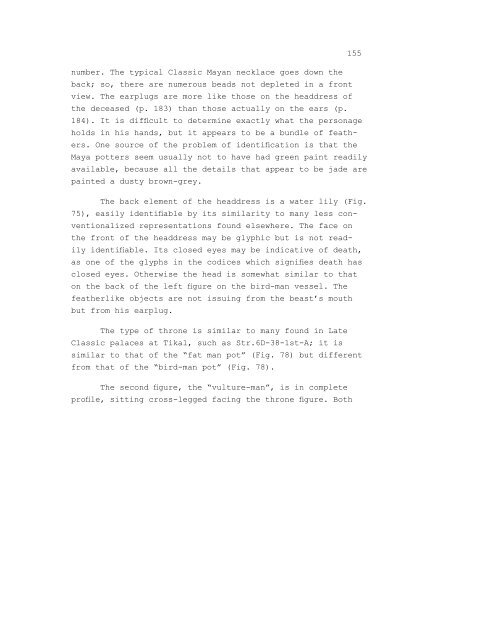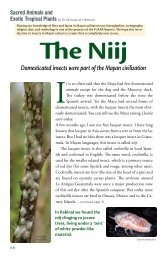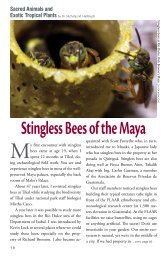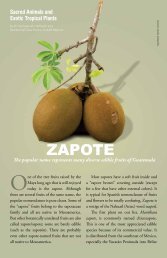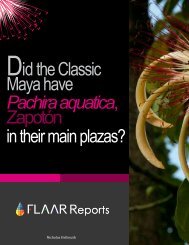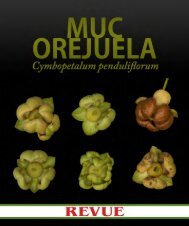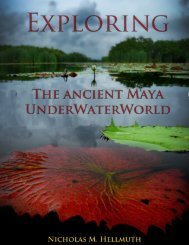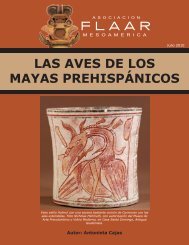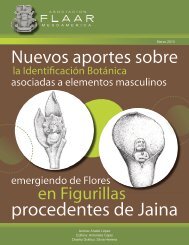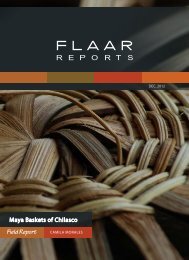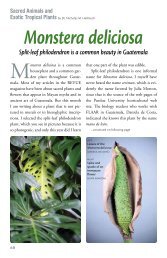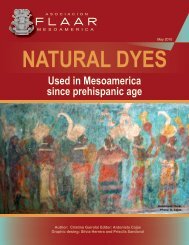Tikal Burial 196 Tomb of the Jade Jaguar - Maya Archaeology
Tikal Burial 196 Tomb of the Jade Jaguar - Maya Archaeology
Tikal Burial 196 Tomb of the Jade Jaguar - Maya Archaeology
You also want an ePaper? Increase the reach of your titles
YUMPU automatically turns print PDFs into web optimized ePapers that Google loves.
155<br />
number. The typical Classic <strong>Maya</strong>n necklace goes down <strong>the</strong><br />
back; so, <strong>the</strong>re are numerous beads not depleted in a front<br />
view. The earplugs are more like those on <strong>the</strong> headdress <strong>of</strong><br />
<strong>the</strong> deceased (p. 183) than those actually on <strong>the</strong> ears (p.<br />
184). It is difficult to determine exactly what <strong>the</strong> personage<br />
holds in his hands, but it appears to be a bundle <strong>of</strong> fea<strong>the</strong>rs.<br />
One source <strong>of</strong> <strong>the</strong> problem <strong>of</strong> identification is that <strong>the</strong><br />
<strong>Maya</strong> potters seem usually not to have had green paint readily<br />
available, because all <strong>the</strong> details that appear to be jade are<br />
painted a dusty brown-grey.<br />
The back element <strong>of</strong> <strong>the</strong> headdress is a water lily (Fig.<br />
75), easily identifiable by its similarity to many less conventionalized<br />
representations found elsewhere. The face on<br />
<strong>the</strong> front <strong>of</strong> <strong>the</strong> headdress may be glyphic but is not readily<br />
identifiable. Its closed eyes may be indicative <strong>of</strong> death,<br />
as one <strong>of</strong> <strong>the</strong> glyphs in <strong>the</strong> codices which signifies death has<br />
closed eyes. O<strong>the</strong>rwise <strong>the</strong> head is somewhat similar to that<br />
on <strong>the</strong> back <strong>of</strong> <strong>the</strong> left figure on <strong>the</strong> bird-man vessel. The<br />
fea<strong>the</strong>rlike objects are not issuing from <strong>the</strong> beast’s mouth<br />
but from his earplug.<br />
The type <strong>of</strong> throne is similar to many found in Late<br />
Classic palaces at <strong>Tikal</strong>, such as Str.6D-38-1st-A; it is<br />
similar to that <strong>of</strong> <strong>the</strong> “fat man pot” (Fig. 78) but different<br />
from that <strong>of</strong> <strong>the</strong> “bird-man pot” (Fig. 78).<br />
The second figure, <strong>the</strong> “vulture-man”, is in complete<br />
pr<strong>of</strong>ile, sitting cross-legged facing <strong>the</strong> throne figure. Both


